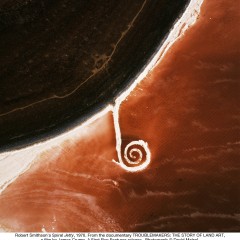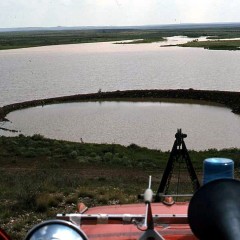Did you ever pick clovers in the summer and tie the stems together to make bracelets, crowns, rings and necklaces? Perhaps you’ve picked buttercups or dandelions and smooshed your nose in the flowers making your proboscis yellow? These simple summer pleasures of childhood resulting from unstructured time in nature are not far removed from the art of Andy Goldsworthy, featured in the new 93-minute documentary, “Leaning into the Wind.” The only difference is that Goldsworthy’s play with nature takes it to the next level, to magic.
Artist and his childlike play with nature
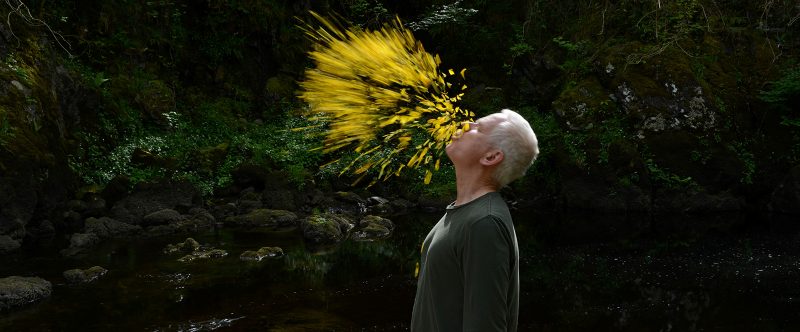
The film, a follow up to the 2001 “Rivers and Tides,” by the same filmmaker, Thomas Riedelsheimer, demonstrates the artist’s childlike willingness to get on the ground, in the ground — or into a hedgerow, even — to merge his body with the natural world. In the slow, meditative film — more of a filmic poem than a straight reportage piece — Goldsworthy “paints” with wet leaves (covering a fallen tree trunk with bright yellow leaves its neighbor trees dropped on the ground); he paints with rain, in repeated scenes where he places his body on urban pavement at the beginning of a downpour and gets up after a while, leaving the dry shadow of his body visible to passers by for a few moments before it disappears.
When director Thomas Riedelsheimer’s camera is not holding fast and lovingly capturing the finished works, or following Goldsworthy, at work, we get closeups of the artist talking, unscripted, about his life and his art. This is not a tell-all movie, and we don’t get a whole lot from the artist, who is the only “talking head” in the film. But the personality comes across, a humble person, driven, perhaps obsessed, with nature, and a risk-taker willing to get back up when failure comes knocking, as it does repeatedly.
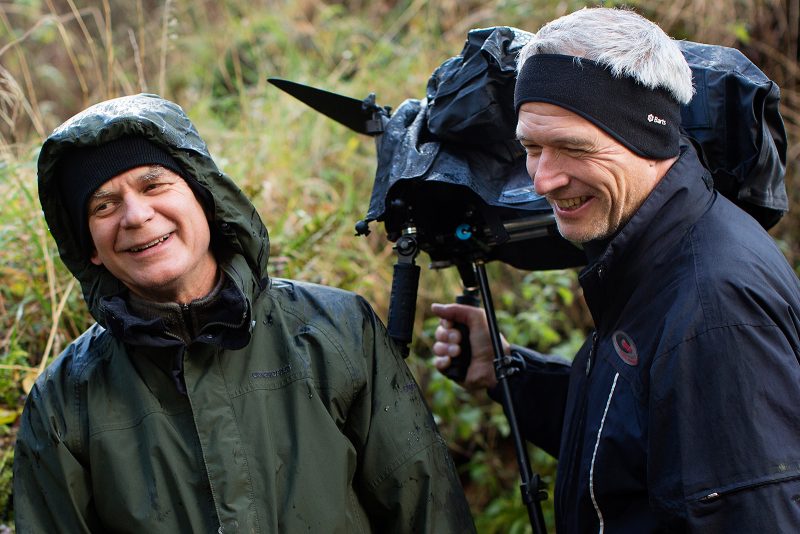
Biographical information
Goldsworthy spent a lot of time on a farm in his youth and did a lot of moving rocks around in the fields, hard manual labor in nature. He says the rhythm of “building, cutting, building” was “informative” for his art. He’s had some accidents – fell out of a tree and had his shoulder “bolted together.” “I fall a lot,” he says, continuing, “Learning to fall is important.” And, in a poignant passage, he talks about how as a young person, he had thoughts about his life’s course. Then, there was a separation, divorce and the death of his wife Judith, that made major upheavals in his life. There are four children from the marriage. Then he met Tina, and now he has 5 children, ranging from 4-years old to 27. His life is “not standard passage.” His daughter, Holly, now works with him, and he’s obviously proud of her. You see him praise her work repeatedly through the movie.
The music in this film switches from melodic and sweet to didgeridoo and scritch-scratch percussive noise. I enjoyed the melodic parts and felt the percussive bits became scene stealers that also made obvious emotional connections, nudging your thoughts to indigenous art and shamans, and thus pretty clearly identifying Goldsworthy as a contemporary shaman. Since every scene in the film displays the artist’s shaman-like acts and thoughts, the music’s reinforcement of Goldsworthy’s magic seems unnecessary.
Walking through a hedge, both metaphorical and literal
“Leaning into the Wind” covers the artist’s work around the world — in Brazil; the UK — Dumfriesshire, Scotland, Morecambe Bay, Lancashire, England (formative place, where he went to school and began working with the land); the US — St. Louis, MO, New England; and Southern France, to mention a few.
Nothing is explained about how his (mostly temporary and ephemeral) work is funded. But we suppose there’s commissions for the few permanent works, like the eerie “sleeping stones,” coffin-like carved stone pieces you see him making (it’s arduous work requiring earth-moving equipment and a team).
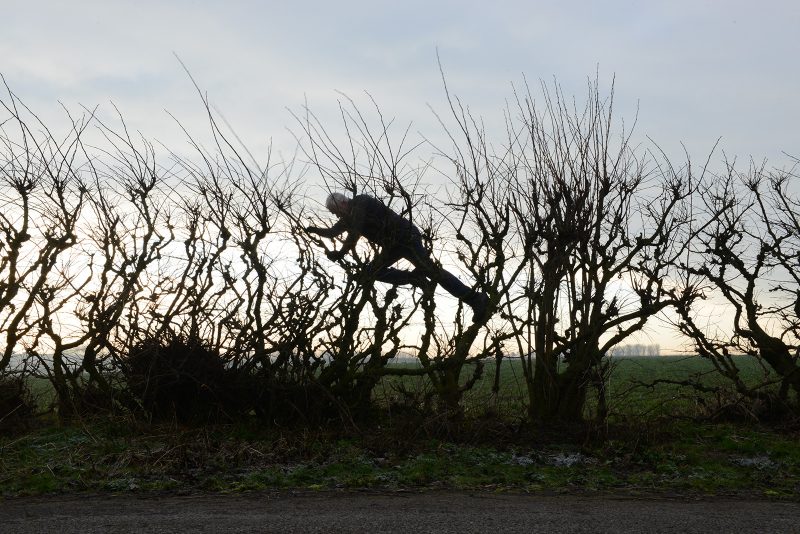
There’s also photography. Goldsworthy’s finished works are surprising – beautiful, organized insertions of color into the landscape. They are beautifully photographed. As with Christo and Jeanne Claude, the sale of documentary photos most likely fuels Goldsworthy’s work. It really doesn’t matter but the movie’s calm buildup of project after project, with no explanations, does make you wonder about the money.
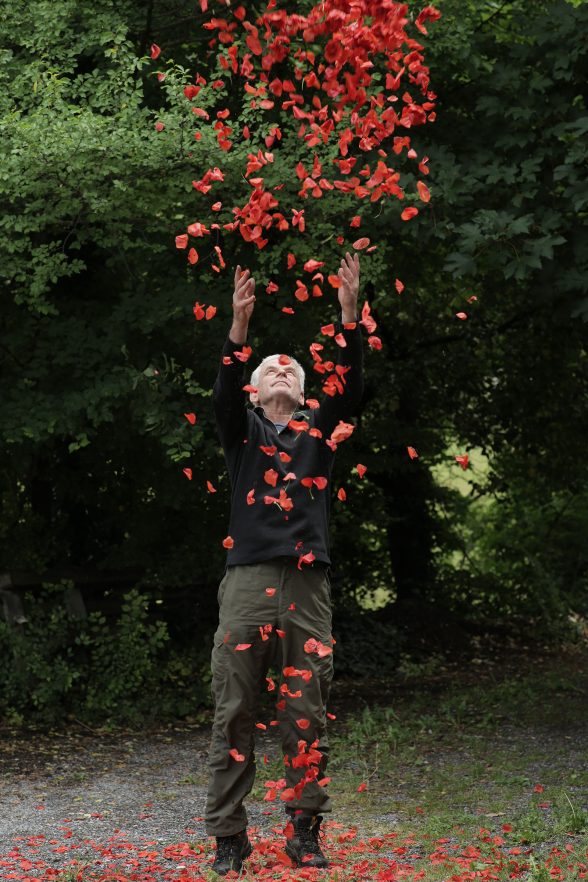
Part of what appeals about Goldsworthy, and this comes across in the film, is his humbleness, and his philosophy. “You can walk on the path or you can walk through the hedge,” he says. And while this is a metaphorical statement, it also embodies something. The guy actually does walk through hedges, as seen repeatedly in the film.
Land art, failure and indomitable spirit
He also deals with failure on a repeat basis, since how can you stop the wind from blowing away your perfectly-placed leaves in your magical arrangement? But the guy is indomitable, and begins again, repeatedly, as you see in the movie.
The 62-year old artist says at one point that his work “isn’t so clear anymore.” This somewhat sad note jars with the person who seems so vital. But this artist is also the author of five “Sleeping Stone” pieces, which look like uncovered coffins in the landscape. I could only read death in these works, the final merging of body and earth. But for Goldsworthy, this ultimate merge seems less sad or morbid than accepting and joyful. And I’ll leave it there.
“Leaning into the Wind” is a good film and a beautiful film. It’s an embrace of this intriguing earth artist and his magical interventions. Don’t miss it.
More about Andy Goldsworthy. Watch the 2001 “Rivers and Tides” as a warm-up for “Leaning into the Wind.”
“Leaning into the Wind” opens in New York and Los Angeles on March 9, 2018, and in Philadelphia, at the Ritz at the Bourse on March 23, 2018. 93 minutes.



